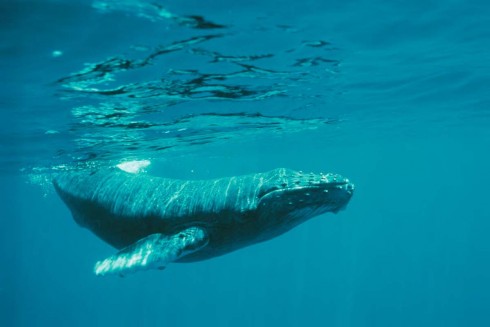According to a study published in Molecular Biology and Evolution, whales have mechanisms to protect themselves against cancer. Since the process of cancer formation is similar in all mammals, this new knowledge could eventually lead to therapeutic applications in humans.
A Cancer Paradox Among the Giants
Cancer is usually triggered by a defective cell. Normally, with each cell division, errors can enter a cell’s DNA. Some of these errors can cause a cell to divide uncontrollably, which corresponds to the development of a tumour. A greater number of cell divisions in a lifetime would therefore lead to a higher cancer rate.
Consequently, animals that have a large number of cells and live long lives (whales, for example!) would theoretically be at a higher risk of developing cancer.
But surprisingly, this is not the case. On the contrary, whales generally have fewer cases of cancer than smaller animals! This contradiction is highlighted by “Peto’s Paradox,” formulated in 1977. English epidemiologist Richard Peto found that humans and mice had a similar cancer rate, even though a human has 1,000 times more cells than a mouse and lives 30 times longer.
Solutions to the Paradox
Being gigantic in size is advantageous for travel, feeding and survival from predators. However, it theoretically increases the risk of cancer. Thus, species that have evolved into gigantic animals have had to develop mechanisms to protect themselves against cancer. Gigantism appeared independently in 10 of the 11 orders of mammals: gorillas in the order of primates, southern elephant seals in the order of carnivores, hippopotamuses in the order of artiodactyls and so on. These animals have probably all developed different mechanisms that help solve the paradox.
For example, scientists have discovered that elephants, which have a cancer rate of only 5%, have about 20 copies of a tumour suppressor gene called TP53, while humans have only one. The p53 protein produced by this gene promotes DNA repair or self-destruction of the defective cell, and thus prevents the onset of cancer. When this gene is inactive, as in 50% of human cancer cases, protection against cancer is reduced. In elephants, if one copy of the gene becomes inactive, the result is not overwhelming since the other 19 copies can take over. Redundancy of the TP53 gene is therefore one of the possible solutions to Peto’s Paradox; however, this does not seem to be the mechanism whales use.
Whale Cells: A Well-Stocked Toolbox
Researchers have found that cetaceans have generally accumulated fewer mutations—DNA changes that can be negative, neutral or positive—in their genome than other mammals. A low mutation rate could help protect whales from cancer. However, some regions of their genome have changed rapidly, indicating that they were “selected” during evolution. They contain “maintenance genes,” which control cell division and DNA repair, as well as genes related to the immune system. Many of these genes are mutated in human cancers. So, whales have indeed acquired the means to protect themselves from the increased cancer risks associated with their size.
And the St. Lawrence Belugas?
From 1983 to 1999, the cancer rate among belugas in the St. Lawrence River was 27%, which is the highest rate among wild animals, according to a study by Daniel Martineau and Pierre Béland. Since they are not as gigantic as the blue whale, perhaps they have not developed genetic protection mechanisms. The beluga whale genome was first sequenced in 2017, but has not yet been studied in terms of cancer-related genes. Belugas in the Arctic have much lower cancer rates than those in the St. Lawrence, suggesting that the causes are environmental rather than genetic. Indeed, some contaminants are suspected of being carcinogenic or of reducing the effectiveness of the immune system in belugas.
For more on the topic
- La folie des grandeurs : évolution du gigantisme chez les mysticètes (Baleines en direct, 11/10/2017)






